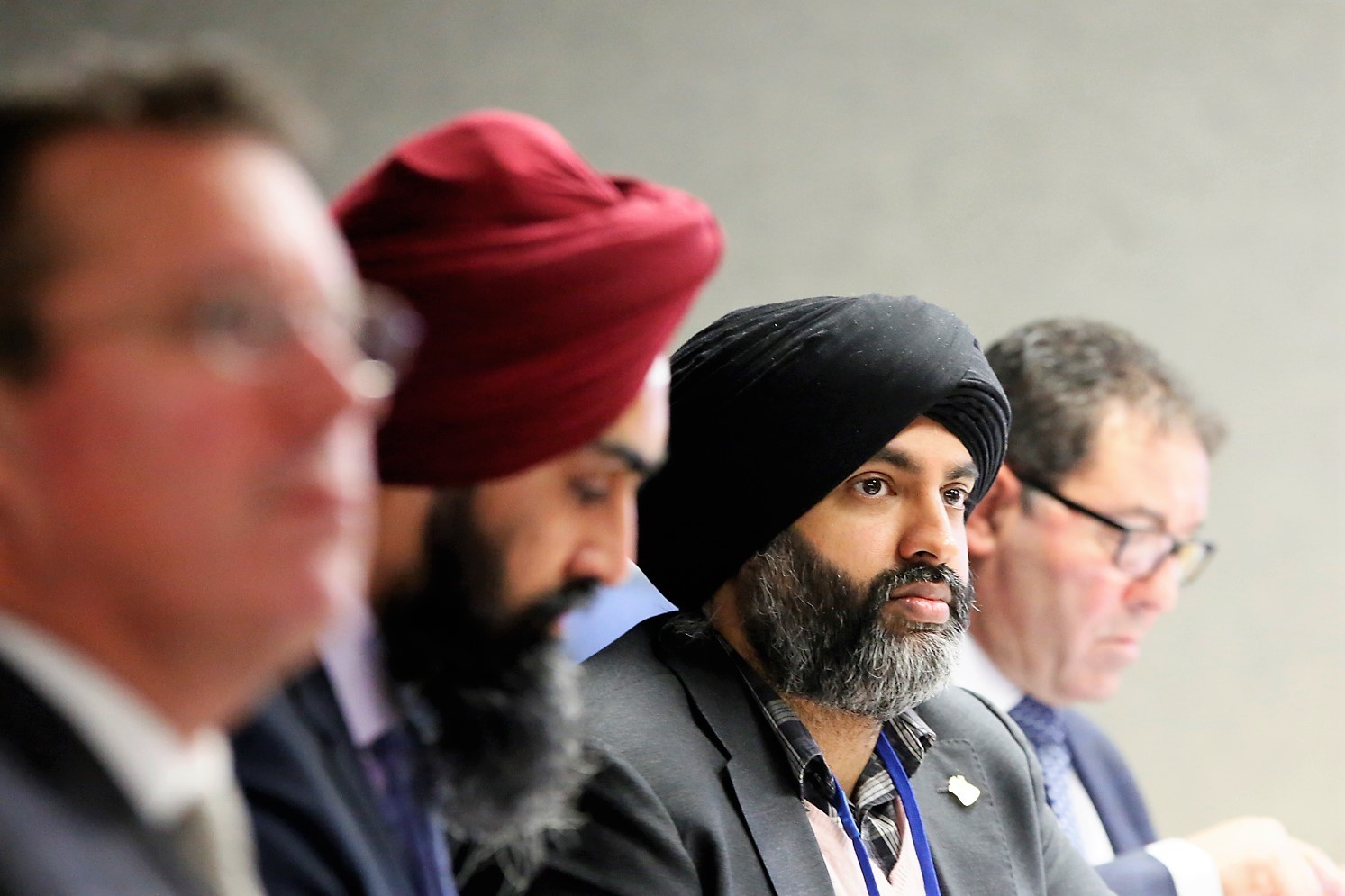
In 2019 City Council will have a clear set of priorities for the new year
The sun is setting on 2018, and many of the city’s key pieces of business will be put to bed. Or will they?
The new council, less than a month old, has not had a chance to make a meaningful dent in last term’s unfinished business, other than its significant move to finally settle on an LRT route along Main Street. The challenges ahead of the fledgling government in 2019 are not small ones. Public safety, redeveloping downtown and getting city hall’s finances in order are just some of the items on tap for the new year.
When the city makes headlines these days, it’s usually because a media report has seized on a Peel Regional Police news release about a major crime. The December weather has not kept the criminal element of Brampton’s society indoors, and residents lacked peace of mind during the holidays as the latest wave of violence continued to leave many in the city feeling unsafe.
A Christmas day shooting in the city’s north end hospitalized an Oakville man. So far, no arrests have been made, but the incident comes on the heels of another holiday act of violence. The day before Christmas Eve, an elderly man was sent to hospital after he was stabbed in a Walmart parking lot. While such acts are almost always senseless, this one was particularly gratuitous, and troubling for any citizen wondering if stabbing someone over a parking spot has become normal behaviour in the city.
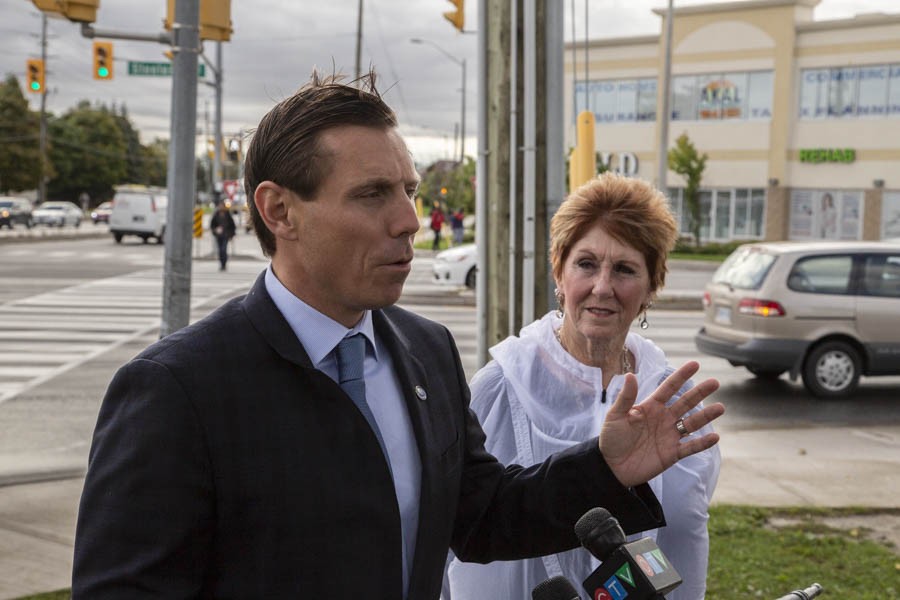
During his election campaign Patrick Brown outlined his plan to address public safety.
Mayor Patrick Brown has repeatedly cited the lopsided police-to-residents ratio in Brampton and Mississauga, the two cities patrolled by Peel police. “We have 189 officers for every 100,000 residents (in Ontario). In Brampton, that (number) is 133,” Brown said on the campaign trail this fall.
The most recent available data from a 2017 Statistics Canada report more or less backs up his statement. It shows that the provincial average is roughly 188 officers per 100,000, compared with a ratio in Brampton and Mississauga of 140 cops per 100,000. The same stats show an average 2 percent decline in the ratio here, consistent with a decline across the country.
Critics say police officers in Peel Region are spread far too thin and are unable to respond in a timely way to calls, leading to an erosion of trust. With an increase in violent crime in Brampton, residents have become more vocal about concerns over public safety. At a community event in September on crime, Jotvinder Sodhi complained that police response times are measured “in days, not hours.”
The longtime practice of street checks is another reason some residents feel unsafe. Data presented by Peel police in 2016 showed that during the heyday of street checks, black residents in the two cities were three times as likely to be stopped and "carded" by police than white residents. Black residents made up only 9 percent of the population but accounted for 21 percent of all carding stops.
The practice led to accusations of systemic institutional discrimination within the Peel police force. Ranjit Khatkur, of the Peel Coalition Against Racialized Discrimination, took the police to task in 2015, butting heads with Police Chief Jennifer Evans on the issue. Evans, who asserted this summer that the spike in violence in Brampton and Mississauga resulted from curtailing street checks, has been accused of discriminatory conduct herself.
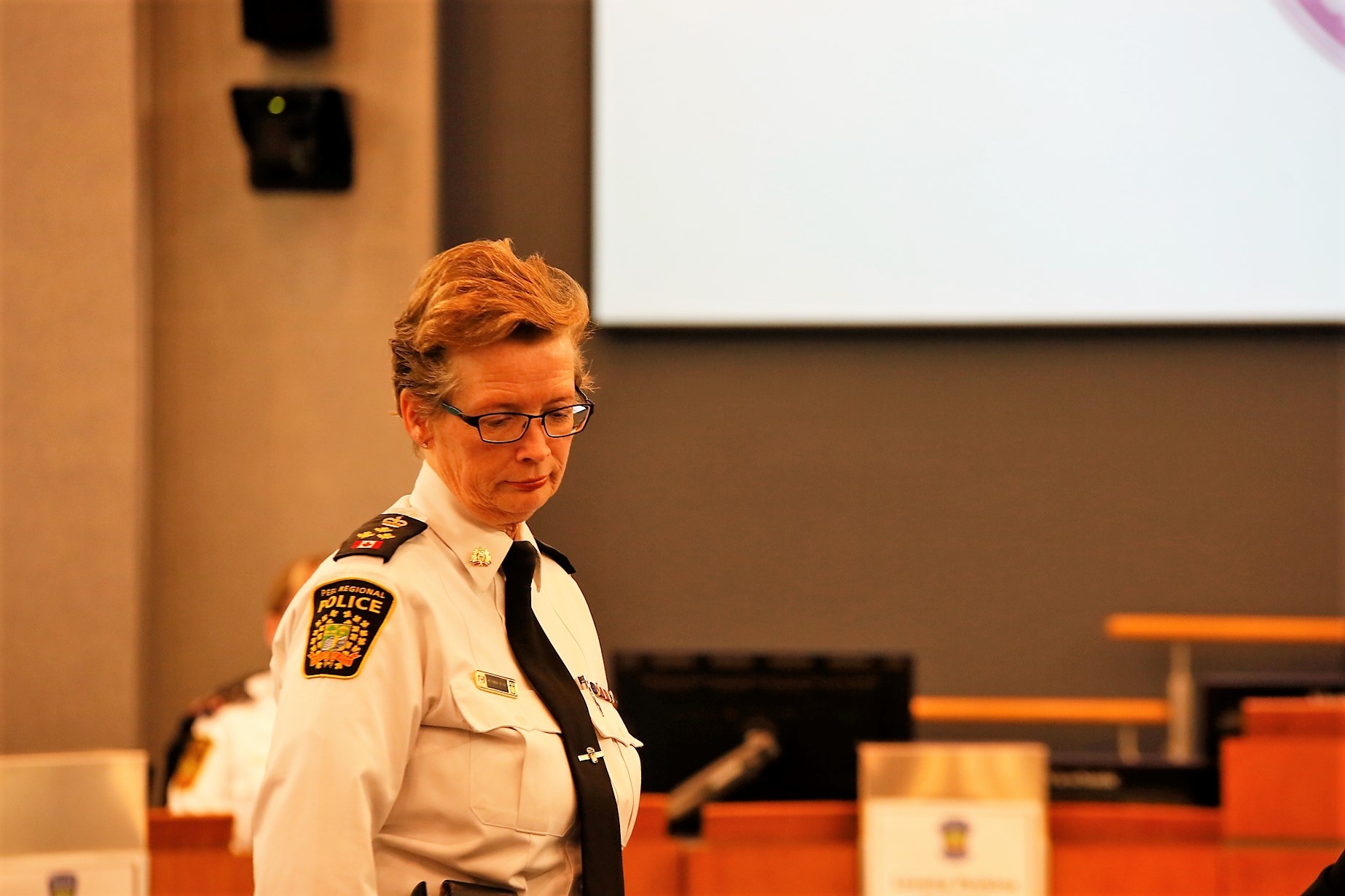
Outgoing Chief Jennifer Evans
She announced her resignation In a surprise move this fall and will step down two weeks from now. On Thursday, the force announced that Deputy Chief Chris McCord will fill in for Evans until the board can find a new chief to head the force.
“Our chief is so dug into her position, which is almost the opposite of what the community, rights groups and the board has been telling her,” Khatkur said at the time. Khatkur's blistering attacks on the force were an attempt, she said, to “highlight the lack of faith in the Peel chief’s leadership … (and that) she (Evans) has failed us.”
Khatkur lobbied the Peel Police Services Board to commission an equity and diversity audit to provide an inside view of how the force is dealing with sweeping demographic changes across Brampton and Mississauga while failing to reflect that change in its own ranks. About 87 percent of uniformed officers are white, in cities that are about two-thirds visible minorities. Among the ranks of senior officers, the disparity was even greater, according to available statistics.
Those figures only started to improve after BJ Sandhu, a highly decorated officer in the force, took the PRP and the police board to the Human Rights Tribunal of Ontario after being denied the opportunity to enter a promotional competition to move to the rank of inspector. The hearings on the case in 2017 revealed discriminatory behaviour and a frat-house culture within the department. The tribunal ruled that Sandhu, who is of South Asian descent, had been discriminated against and that the force devalued policing in the South Asian community, which makes up about half the population in Brampton.
The equity and diversity report ordered by the board was to be released by Evans at a board meeting on Nov. 23, according to two independent assurances from within the force and the board, but it has yet to be made public.
Many have speculated that misconduct within the force during Evans’ tenure led to her early retirement in January. The Toronto Star reported in 2015 that during a five-year period, about 640 Peel officers had been disciplined for misconduct, about a third of the force. Evans had earlier claimed that only two percent of her force’s officers were disciplined for misconduct during their careers. The rate of misconduct in Peel’s police force was about three times higher than any other police department in Ontario.
Choosing a new chief, restoring trust in the force and modernizing the police are just some of the issues new council members, especially Brampton Mayor Patrick Brown, who will sit on the police board, will have to tackle. The seven members of council that also sit on regional council will take a more active part through their role in setting the police budget.
Brown, along with the rest of the police board, will exercise control over how the force conducts itself and addresses the rise in crime residents told candidates about repeatedly throughout the municipal election campaign. Crime, according to a poll of 999 Brampton residents commissioned by The Pointer and conducted by Forum Research in late August, was the number one concern of voters ahead of the election.
The new council has already moved to take more responsibility on the issue. Earlier this month, council voted against a staff recommendation to scrap the city’s community safety advisory committee, signalling members are taking public safety matters seriously. In 2019, residents will see how council is working to address crime and public safety at a local level.
Another thorn in the city's side is the roadblocks to redevelopment in the downtown core, an issue of concern to residents, businesses and leaders alike. One local historian, Steve Collie, told The Pointer “we’re stuck in the ‘60s right now.” The inability of developers to get projects off the ground in the area is due, in large part, to the area's floodplain designation.
The province restricts development in areas that are seen as high-risk flood zones, and the nearby Etobicoke Creek is the reason for the designation. In 1948, a devastating flood caused millions of dollars in damage to the downtown. To combat this, the portion of the creek that meandered through the city was buried and a bypass channel was constructed to divert the water away from the downtown.
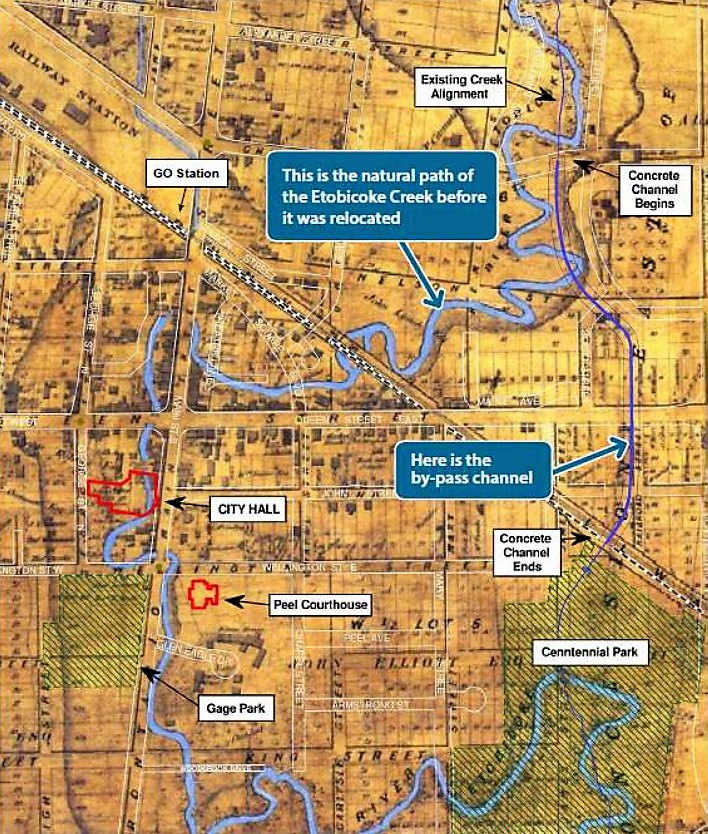
The channel saved Brampton from flooding in 1954 during Hurricane Hazel, which destroyed parts of Mississauga and Toronto, but regulators are still wary of letting development take place unfettered. Even though special policy areas were created in the ‘80s to allow new businesses to set up shop, the process requires entrepreneurs to jump through a lot of hoops to complete their projects.
One such project being delayed by the floodplain is Downtown Reimagined, the city’s now postponed bid to revitalize the city-centre area. Portions of Etobicoke Creek went underground through a series of tunnels built in the 19th century. Now, concerns about the unknown terrain in the area and potential subterranean issues related to the underground water flow mean the cost of the project, which involves replacements and upgrades to sewer and water lines as well as streetscape enhancements, could balloon as a result of unknown difficulties. The initial estimate for the project was $23 million, but the city could be on the hook for as much as $45 million down the line. That doesn't include the expense of installing utilities, which could be as high as $20 million to $25 million (the initial estimate was $10 million).
City officials don’t know exactly where those old tunnels are, as records are sketchy. Director of capital works Jayne Holmes told council during a Dec. 12 meeting that “the extent of those tunnels and where they are located … we couldn’t find any information on.
“There (are) some parts of the tunnels that are not accessible and we’re going to have to do some investigation to determine what needs to be done.”
Brown, during the same council meeting, expressed frustration with staff, questioning why little has been done to resolve the issue despite council's direction to staff back in 2016 to get down to the bottom of the underground problem. Now, with questions still unanswered and potential costs rising, council has pulled the plug on the project ahead of the 2019 budget season. It remains to be seen when the Downtown Reimagined project to breathe life into the ageing city-centre will be reimagined by staff and council.
The LRT Main Street route, which council has firmly adopted as the alignment for the project, was another curveball council threw to staff working on Downtown Reimagined. A week before the city announced it would pause the project, Councillor Gurpreet Dhillon successfully revived the Main Street route former mayor Linda Jeffrey had championed.
This threw the Downtown Reimagined plan into confusion as the initiative includes lane reductions, sidewalk widenings and other street design changes that did not anticipate the addition of LRT tracks. Capital Works now has to consider what impacts an LRT route through the heart of the downtown would have on the plan. City council voted to halt both the revitalization project and the utility upgrades until all the costs associated with it can be accounted for.
All of this is happening while city staff are operating without a permanent leader. Council voted to terminate the employment of chief administrative officer Harry Schlange during a Dec. 12 closed session. Brown expressed his gratitude to Schlange in a press release, saying, “We are thankful for the important initiatives he has helped to build and for the incredible staff team that is in place as a result of his leadership.”
Schlange was brought in by Jeffrey in 2016 to clean up a city hall racked by the chaos of the Susan Fennell years. Jeffrey fired the previous CAO, John Corbett, following a budget dispute. Described as an “agent of change” by Jeffrey, one of the first things Schlange did as CAO was to fire 25 senior city managers.
Brown has not indicated any specific reason for Schlange's firing, though the press release hinted he is looking for a more forward-looking chief bureaucrat rather than Jeffrey’s inward-looking one, who was brought in to clean up the mess from the past rather than bring in new policy initiatives and key strategies.
“There is a strong leadership team at the City of Brampton and we are confident that this team will work collaboratively with Council to advance the programs and services that our residents and businesses have told us are critical to our community’s future,” the release said. “From improved transportation to jobs and community safety, as a team we will work together on the direction that our community has provided.” Joe Pittari, commissioner of corporate services, is serving as acting CAO until a replacement is found in the new year.
Brown has already successfully pushed for a sweeping external audit of all city departments to find out where the cash-strapped municipality can find savings. Schlange, prior to his dismissal, asked council not to proceed with the audit, as he wanted senior staff to continue with its own plan to address financial belt-tightening ahead of the 2019 budget process.
Pittari in recent weeks has been better known for handling the city’s cannabis portfolio. During a Dec. 5 committee of council meeting, the commissioner of corporate services presented a survey to council that suggested a majority of Bramptonians want cannabis retail shops in the city. This prompted Pittari to recommend opting-in.
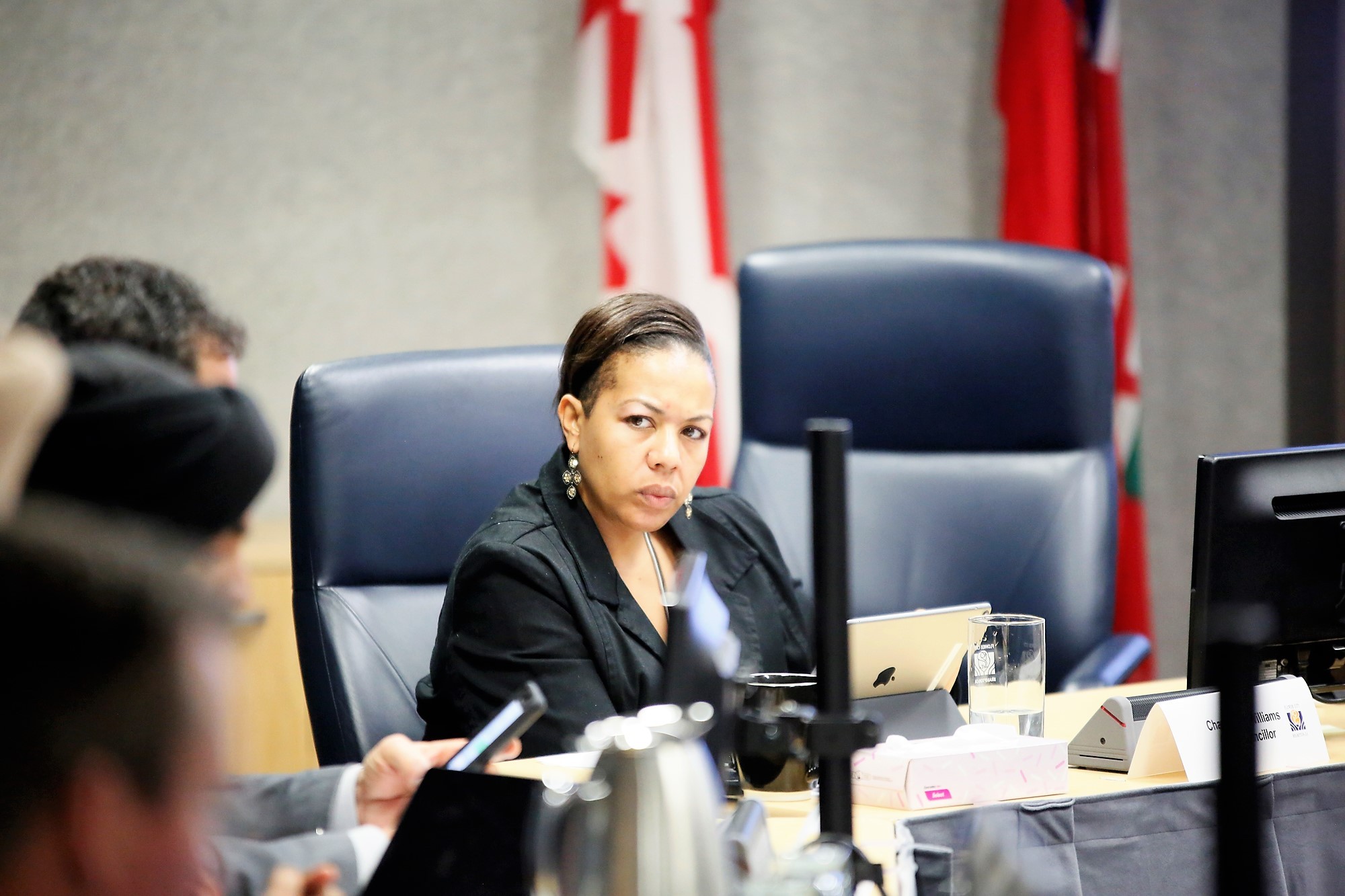
Councillor Charmaine Williams
While most of council appeared to be ambivalent on the subject, Charmaine Williams vigorously opposed retail stores in Brampton. The decision on whether to opt in or out has been deferred to an as-yet unspecified special council meeting in January.
Staff are expected to report back by then with recommendations from an outreach program they will be conducting in the meantime. Mississauga has opted out and Toronto has opted in.
Anna-Marie Carreiro — who credits cannabis for shrinking her brain tumor enough for surgeons to remove it — is one resident who hopes the city opts in and says, “if we have private retail stores, a patient can walk, take the bus, whatever, see what they are buying and make sure it is clean.”
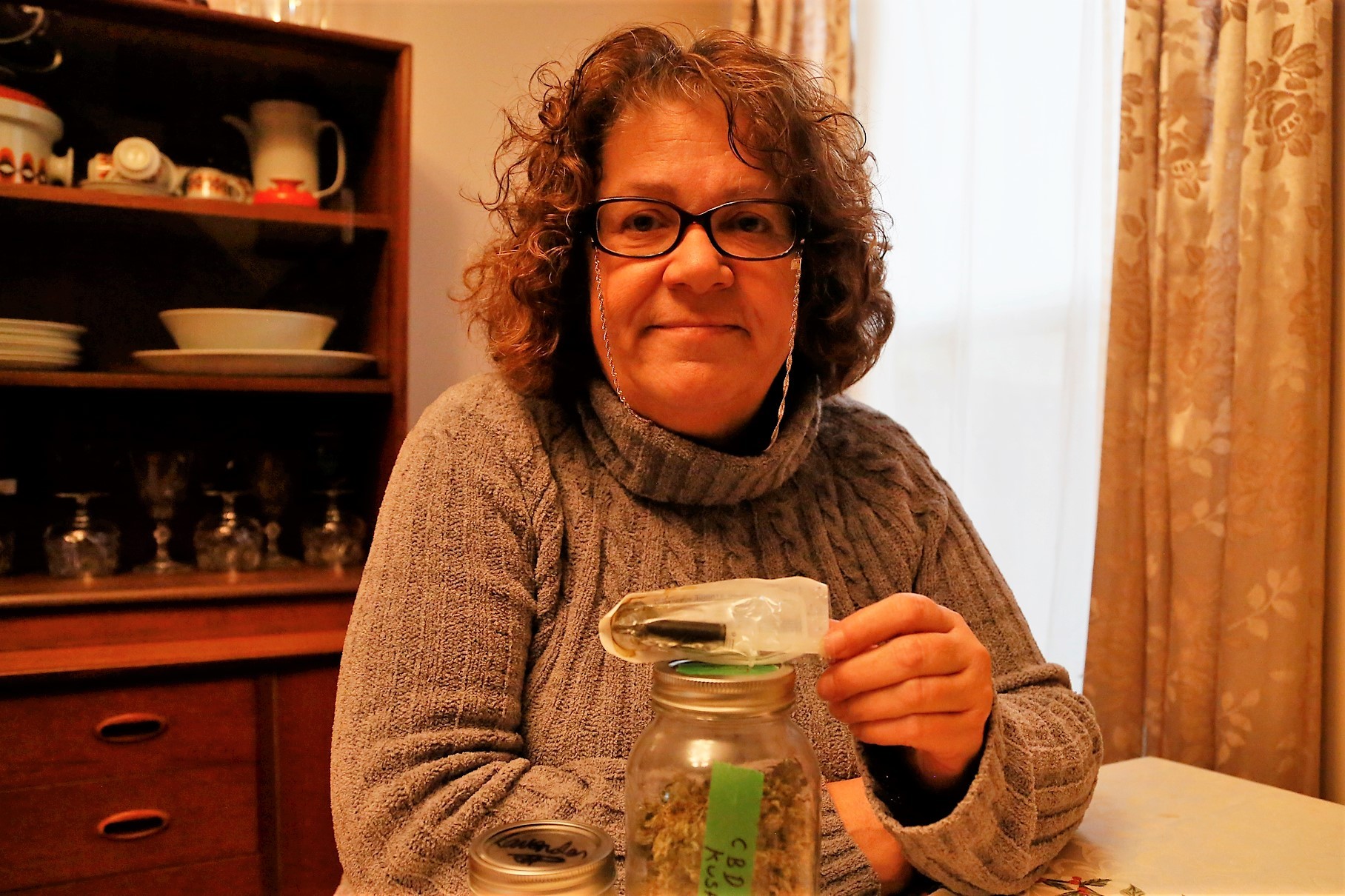
Anna-Marie Carreiro
While health advocates fight for cannabis stores, Brampton’s healthcare sector remains neglected. According to stats provided by the Central West Local Health Integration Network, which contains Brampton’s two hospitals, the LHIN received $936 per resident from the province in funding per year — significantly lower than the provincial average of $1907 per person.
The situation is especially critical due to the lack of hospital beds within the LHIN. Hospitals in the healthcare district have an average of 0.96 beds per 1,000 persons, compared to the provincial average of 2.19 beds.
This has contributed to the phenomenon of "hallway medicine" in Brampton, a term popularized in the city to describe the lack of available treatment spaces in hospitals. The provincial NDPs tabled a bill in October to fund a whole new hospital in the city.
Jaime-Lee Ball became a public example when she was neglected while suffering internal bleeding on a gurney in the hallway of Brampton Civic Hospital in 2017. Luckily, she eventually got the care she needed and survived and has since become an advocate for healthcare in the city, where excessive wait times and hallway care have become routine.
Opposition leader Andrea Horwath said at the time of tabling her bill, “There had been many, many other concerns that had been raised for many years, frankly, that had been ignored by the Liberals. But when Jamie-Lee Ball’s story of being trapped in a hallway at Brampton Civic, screaming in pain for five days, actually came out, it was a wake-up call. Well, it should have been a wake-up call for everyone.”
The NDP motion was defeated by the ruling PCs, with neither of the Brampton Conservative MPPs present for the vote. Premier Doug Ford has provided some additional funding for Ontario hospitals ahead of flu season, but not Brampton's.
The new city council will have to develop a strategy to fund Brampton’s share of healthcare expansion while advocating for the province to provide its fair share as the city continues its rapid population growth.
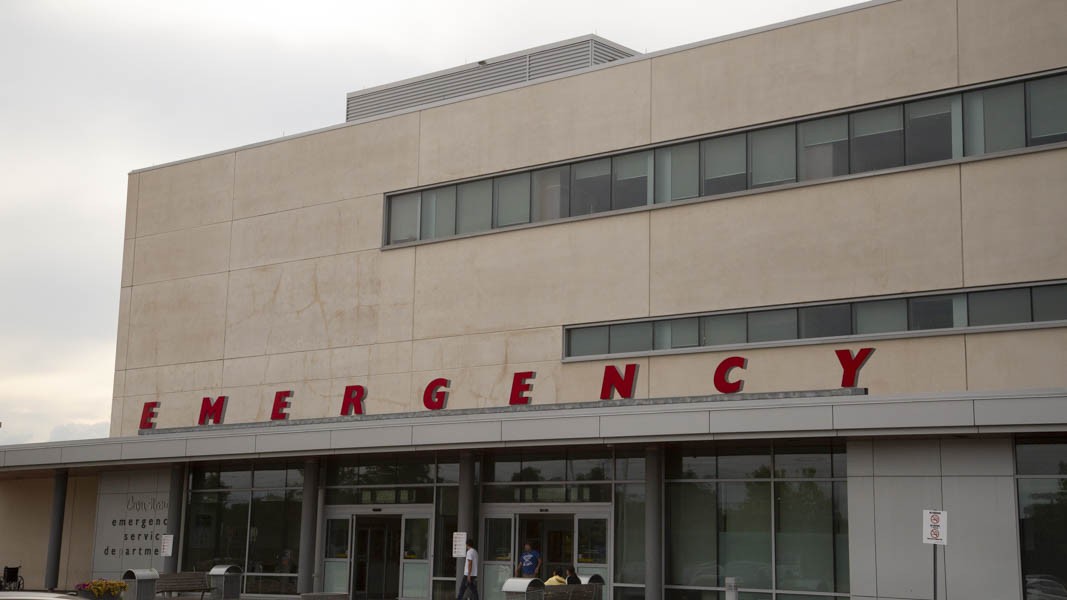
In October, Ford and Health Minister Christine Elliott provided $90 million for 1,100 beds in seven hospitals, none of them in Brampton. Funding also went to upgrades for West Lincoln Memorial Hospital in Grimsby, a move touted as part of the government's efforts to end hallway medicine. Grimsby’s wait times and population growth are not as high as Brampton’s.
To further rub salt in the wounds of city residents, Ford also pulled provincial funding, some $90 million, for the expected Ryerson University campus in the heart of the city’s downtown. Another NDP bill to reinstate the funding was defeated by the PCs, leaving a large funding gap in the project. City council has since been scrambling to figure out how to recoup the cost, with no solution in sight yet.
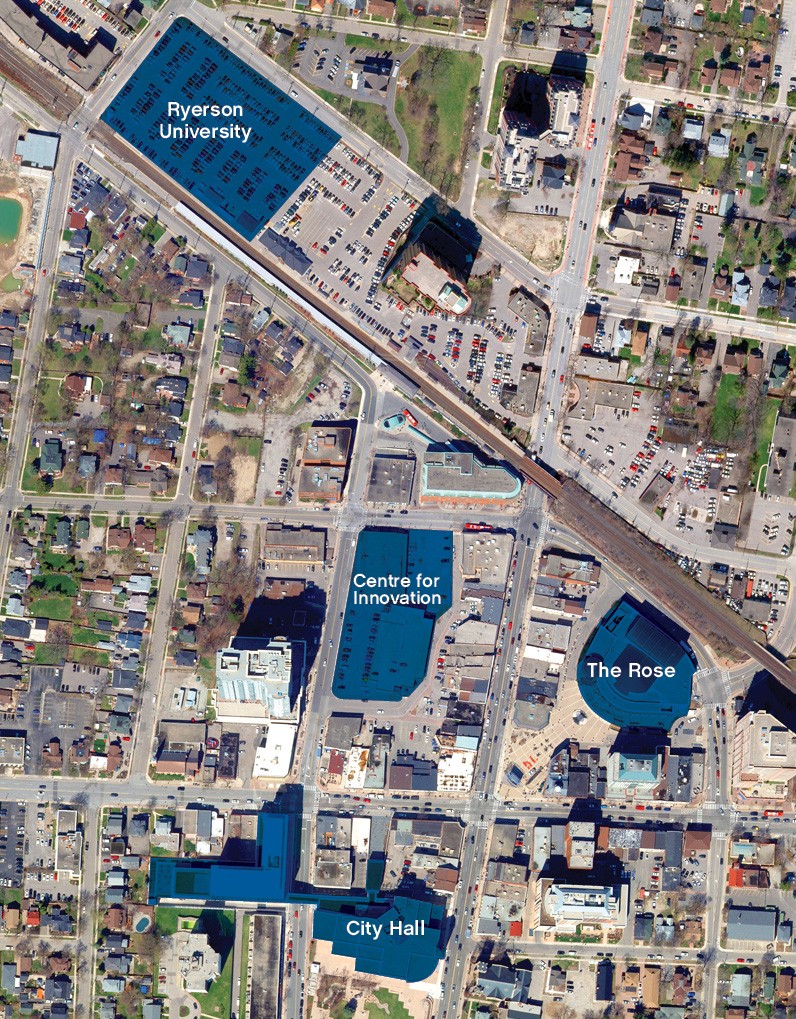
The opening of a branch of Ryerson’s Chang School for Continuing Education at a small downtown location will go ahead in January as planned, however, residents will be eagerly awaiting updates on the main campus project next to the downtown GO train station, as well as a collaborative innovation hub to be built nearby. During the last term, council committed an unprecedented $150 million to the two post-secondary education projects. With the province pulling its funding commitment, it remains to be seen how the project will get off the ground.
A long list of work is waiting for council when it comes back in January. With a city, and a frustrated electorate, looking for change — and a chance to see Brampton in the headlines for positive reasons — the new leaders will surely have a busy year ahead of them.
Submit a correction about this story


